Moving water can be a very dynamic element to include in a landscape photograph. When captured well, moving water can add a sense of motion and life to an image. You can also create some very cool effects with moving water that convey mood. Moving water can also be fairly challenging to capture. Here are 5 tips to consider when capturing moving water in landscape photographs.
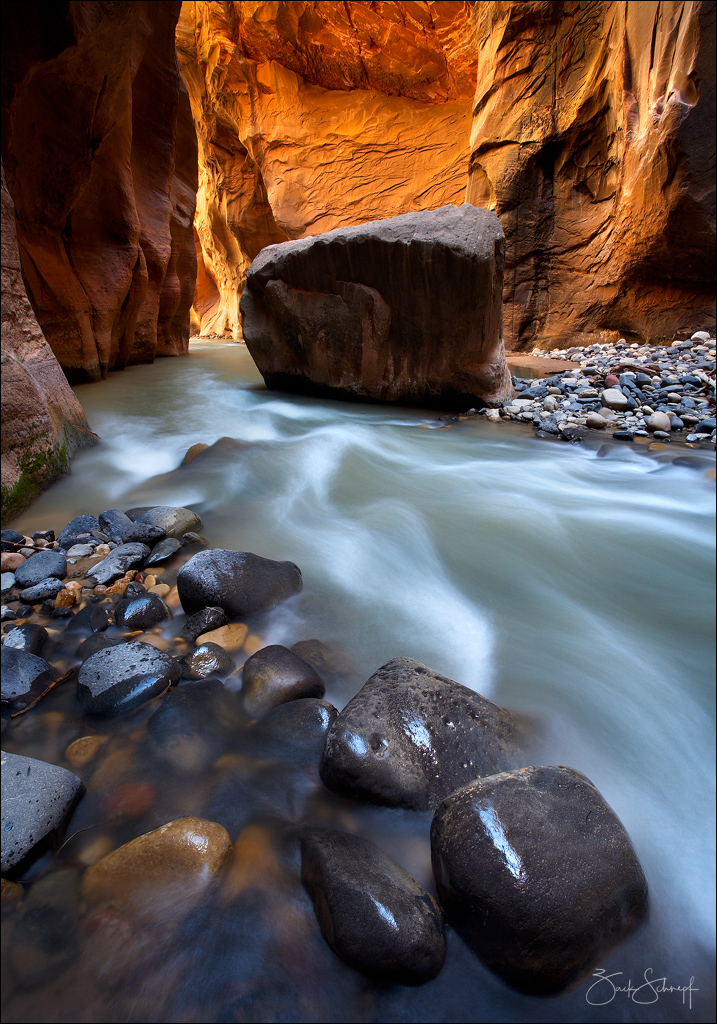
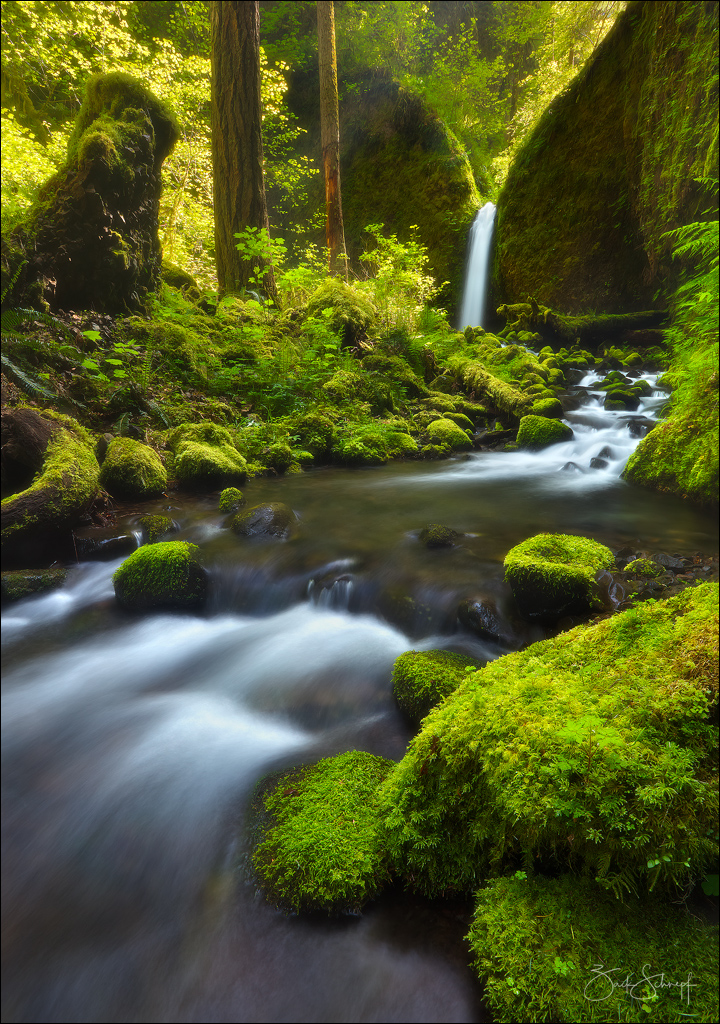
Shutter speed is critical
Shutter speed in the most important variable to control when capturing moving water. The right shutter speed allows us to convey a sense of motion. Too fast and water can look too static and motionless, too long and you can lose the texture and contrast. It really depends on what you as the photographer are trying to capture and share. For instance, when I was capturing the waves rolling over the rocks through keyhole arch, 1/10th of a second perfectly captured the motion of the rushing waves over the rocks. Later that same evening I was trying to capture something more ethereal, so I was using a much longer 30 second exposure . The result was an ethereal water fog effect.
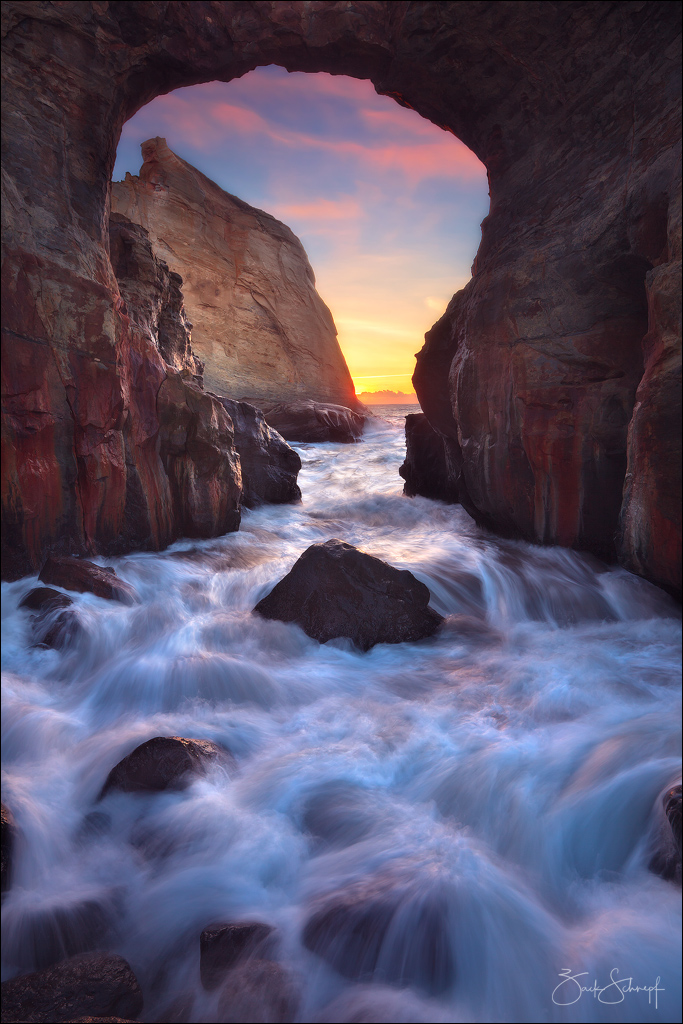
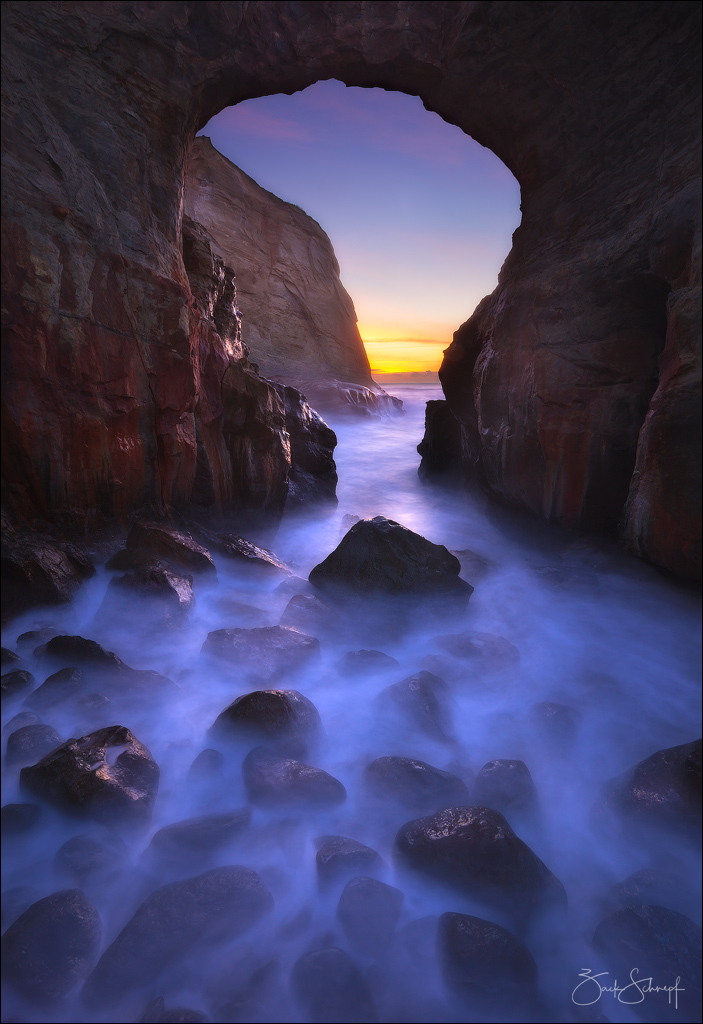
Experimentation
Experimentation is the key to creating interesting images with moving water. Every situation is different and there is really no formula that is going to be right for them all. Finding the right shutter speed to create a particular effect can take some time, but it’s worth the effort. This image of “The Cauldron” as I call it, is a good example of experimentation paying off. Marc Adamus and I were photographing this spot many years ago. As the light of sunset faded we started experimenting with long exposures to see what the effect it would have. This image was the result of a five minute exposure capturing waves crashing over and over. I love the dreamy and ethereal nature of the image.
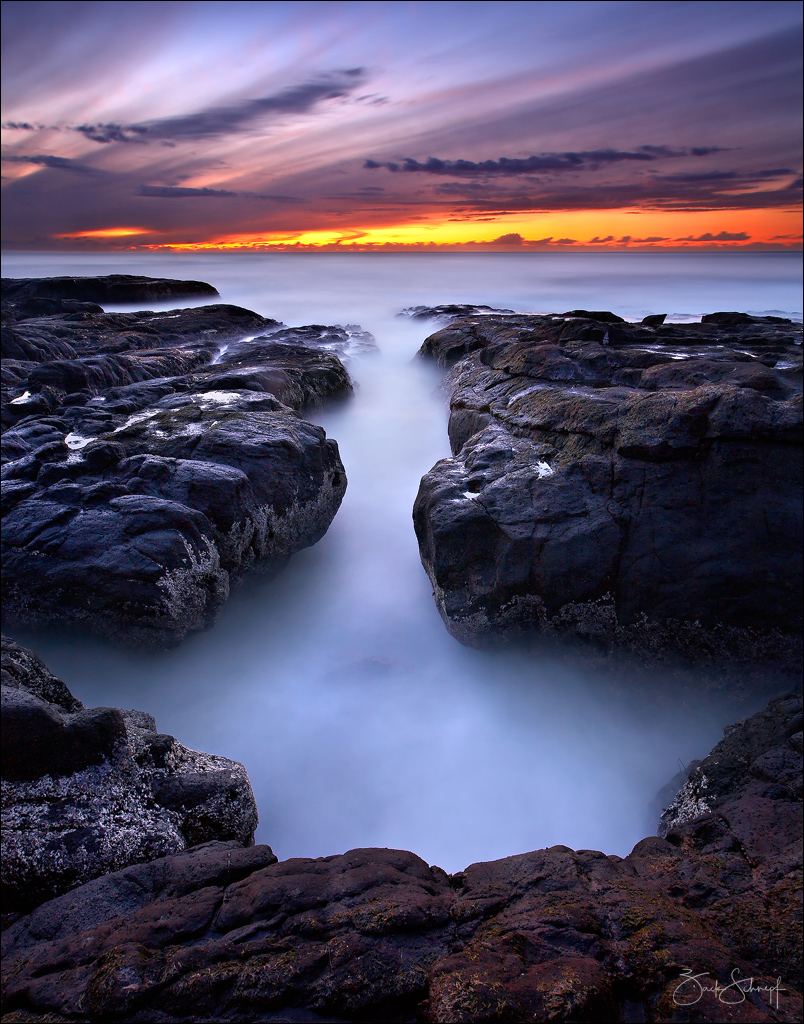
Multiple shutter speed blending
Sometimes, a single shutter speed doesn’t work as well for all areas of an image. In this example, I blended two exposures using different shutter speeds to create this image. The foreground was captured at 1/10th of a second to capture the texture in the moving water. The background was captured using a shutter speed of 1 second.
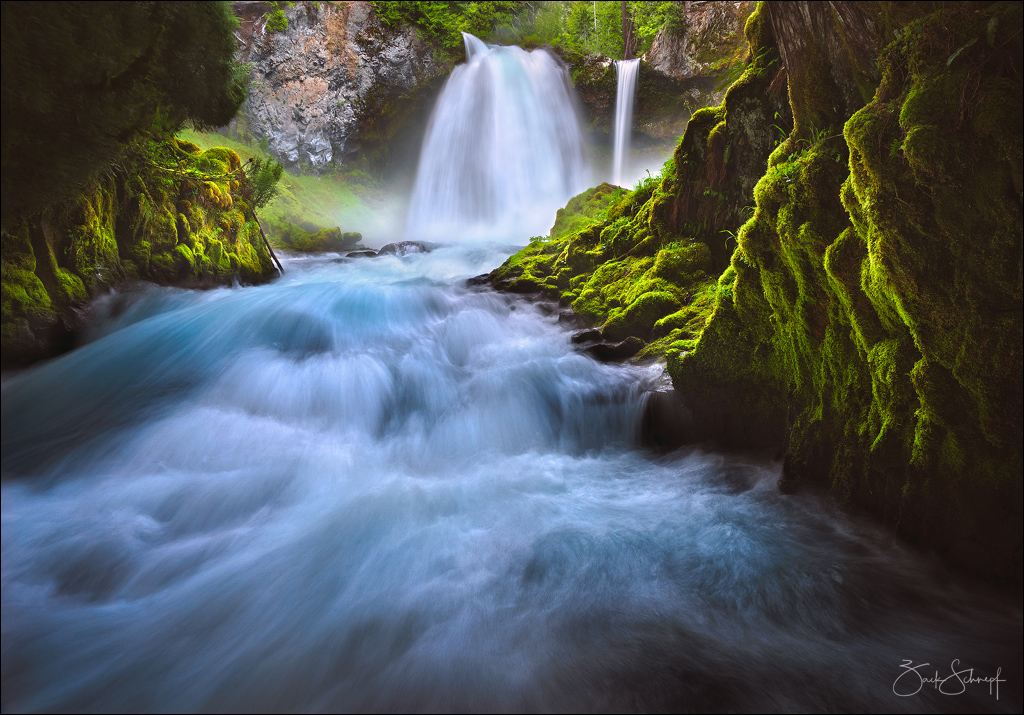
Water and light
Just like any other kind of landscape image, those that include moving water benefit from being captured in the right light. In this example of waves crashing on Cape Kiwanda on the Oregon coast, the light of the setting sun creates gorgeous colors on the rock, in the sky and in the water.
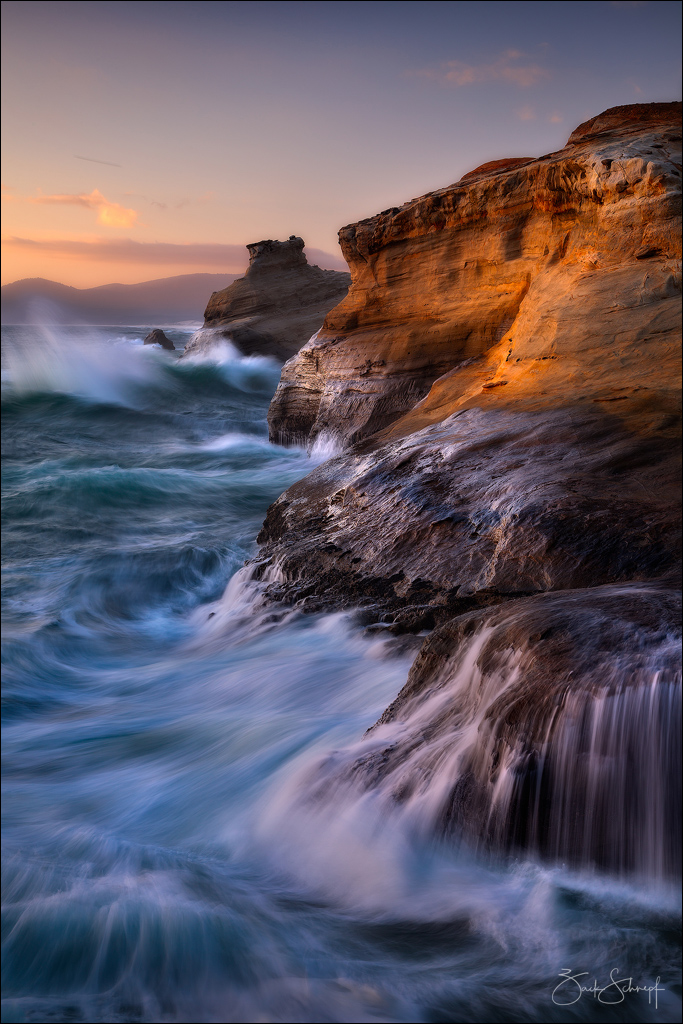
Capturing reflections in moving water
Capturing reflections in moving water is particularly fun and can result in unique images. You can see this in many of the images already shared above. In this example, while teaching a workshop here in Bend, I was demonstrating how to capture reflections in the water of a fast moving rapid along the Deschutes River. There was fall foliage on the bank of the other side of the river and the sun had just come over the horizon. I could see all these beautiful colors reflecting in the water, but it wasn’t until I started experimenting with various shutter speeds that the true potential of this scene was revealed. The textures, colors and sense of motion that were captured were surprising. It ended up being one of my favorite water abstracts and hangs on my bedroom wall.
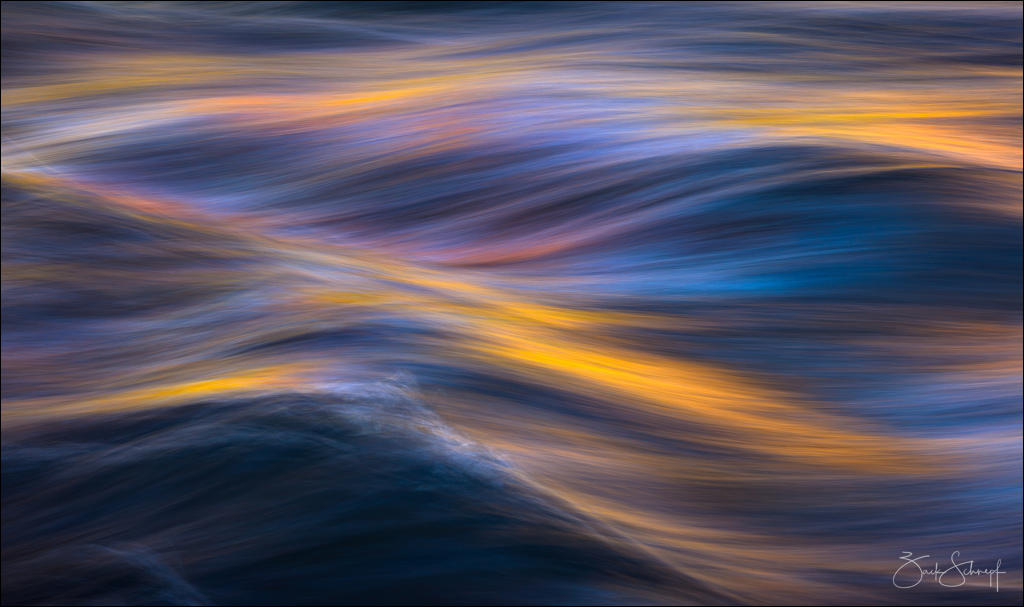
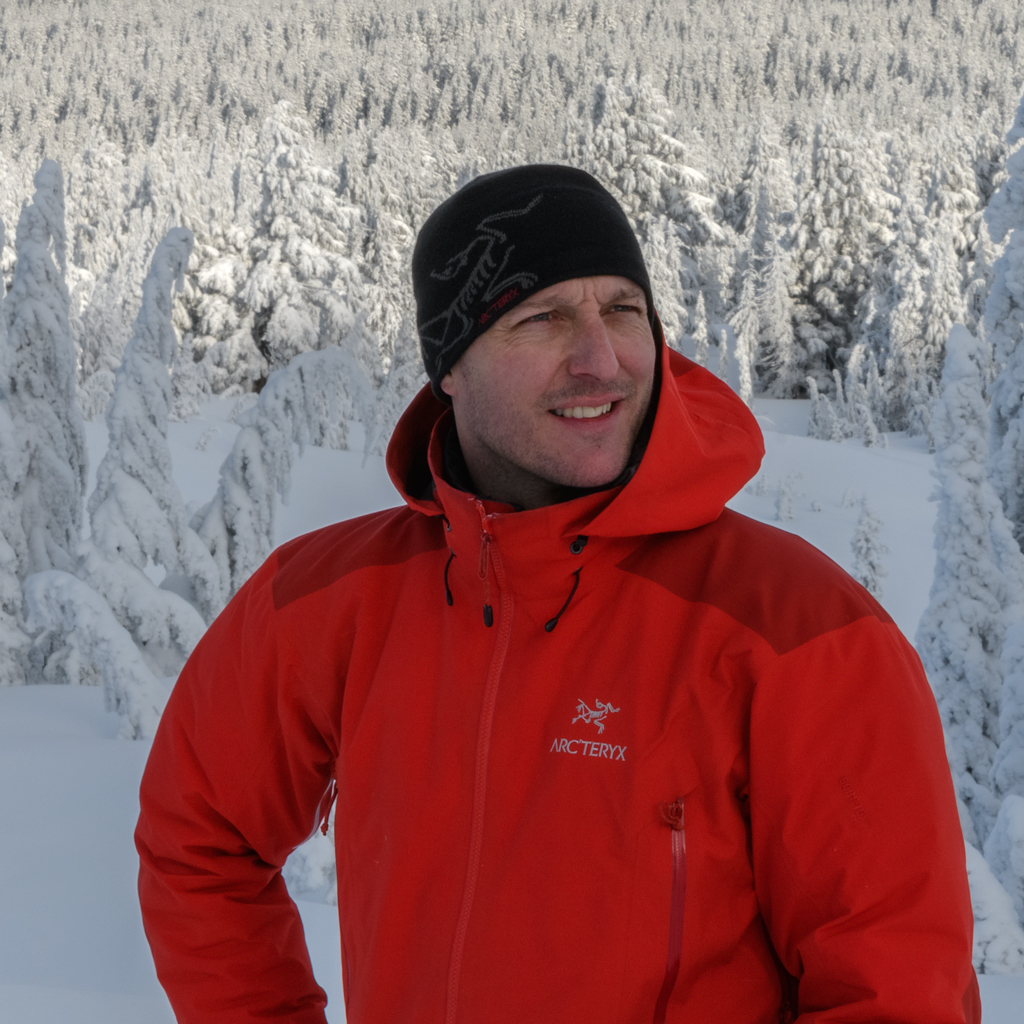
Location: Bend, OR
Website: www.zschnepf.com
YouTube: https://www.youtube.com/user/zschnepf77
Instagram: https://www.instagram.com/zackschnepf/
Zack is an award winning photographer specializing in fine art landscape photography and post processing. “Art is in my blood. My father is a well known poster artist and painter. My mom was a painter, and print maker and my brother is an art director at Facebook. Art is a way of life for my family, and I will hopefully pass it on to my children as well.”
“The love of nature is also something that my family and I are passionate about. I’ve been hiking, biking, rock climbing and backpacking since I was little. From an early age, I learned to appreciate the beauty in nature.”

Recent Comments